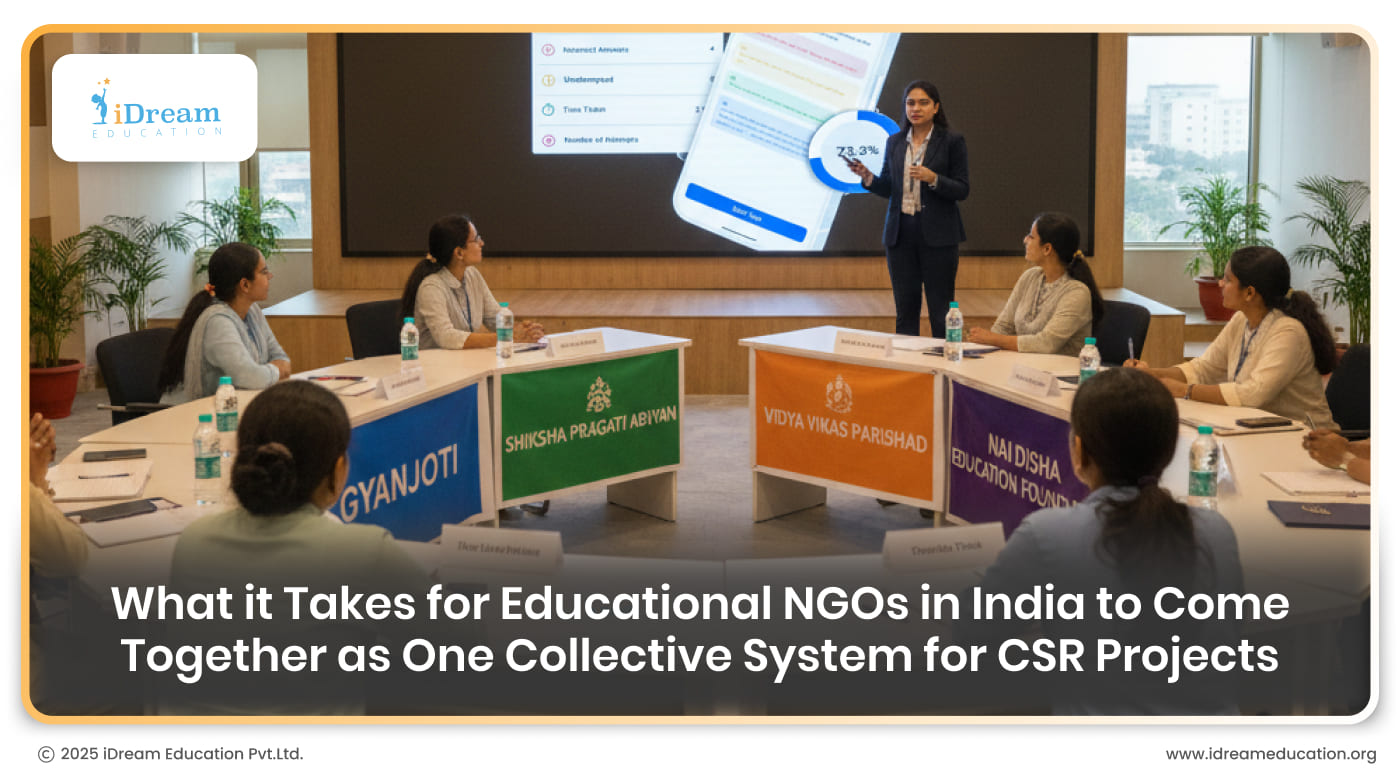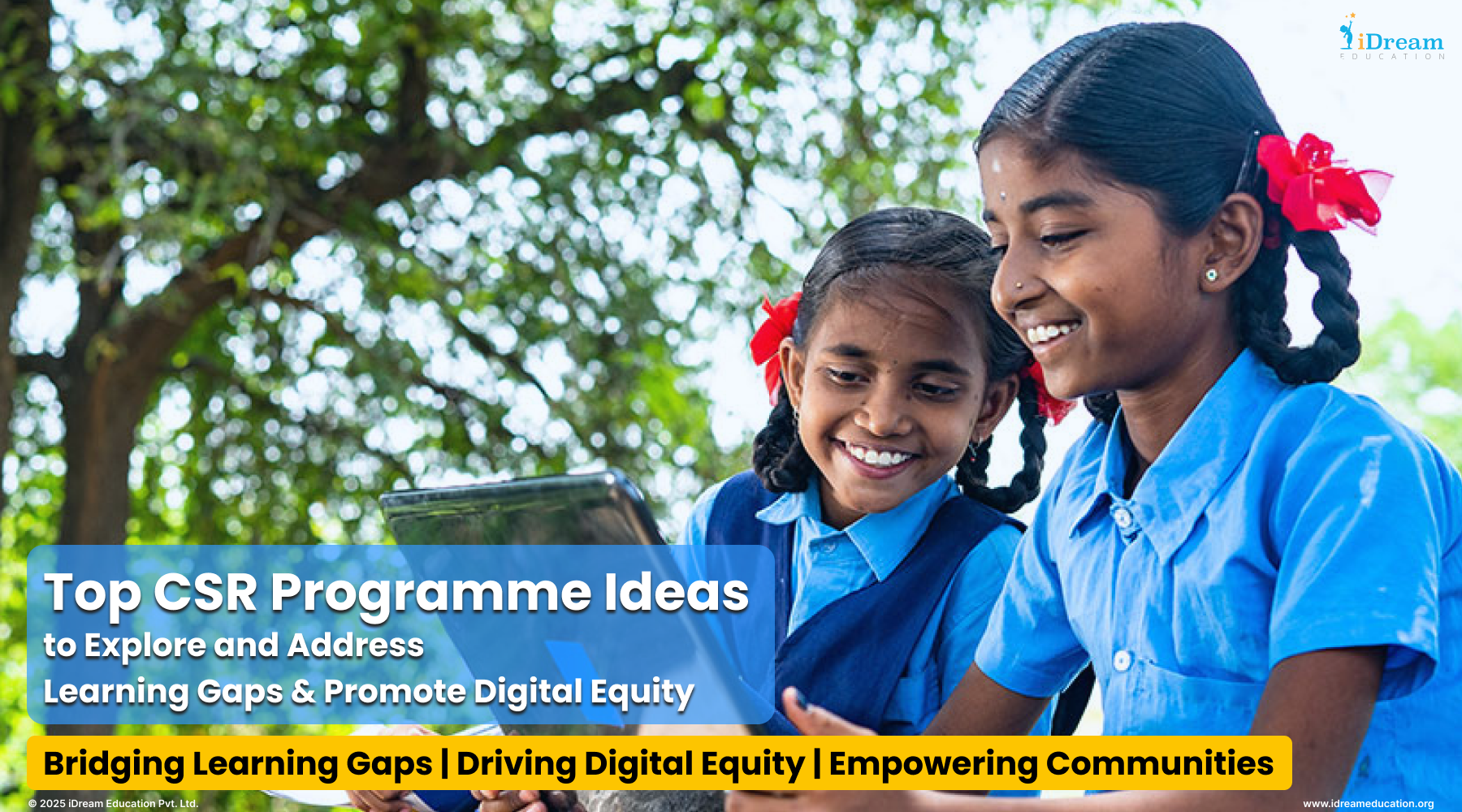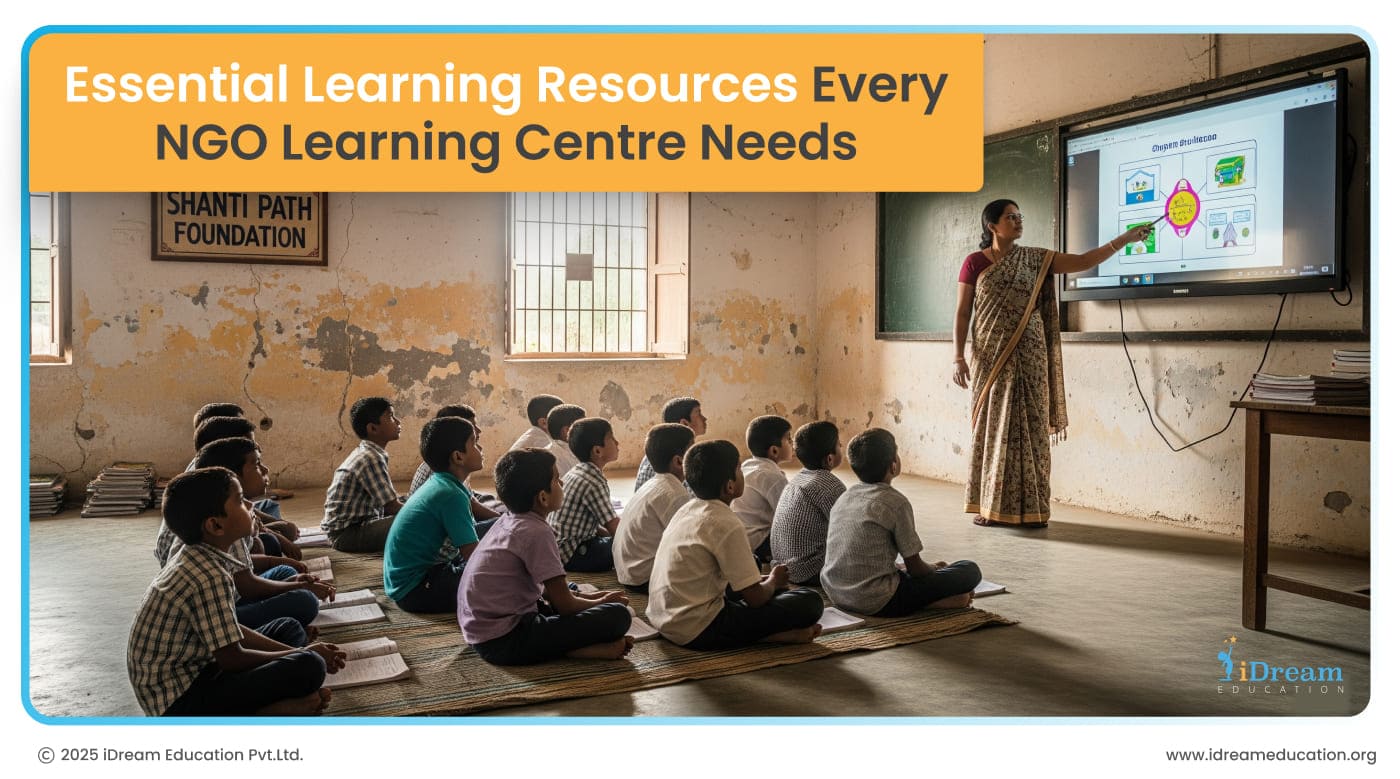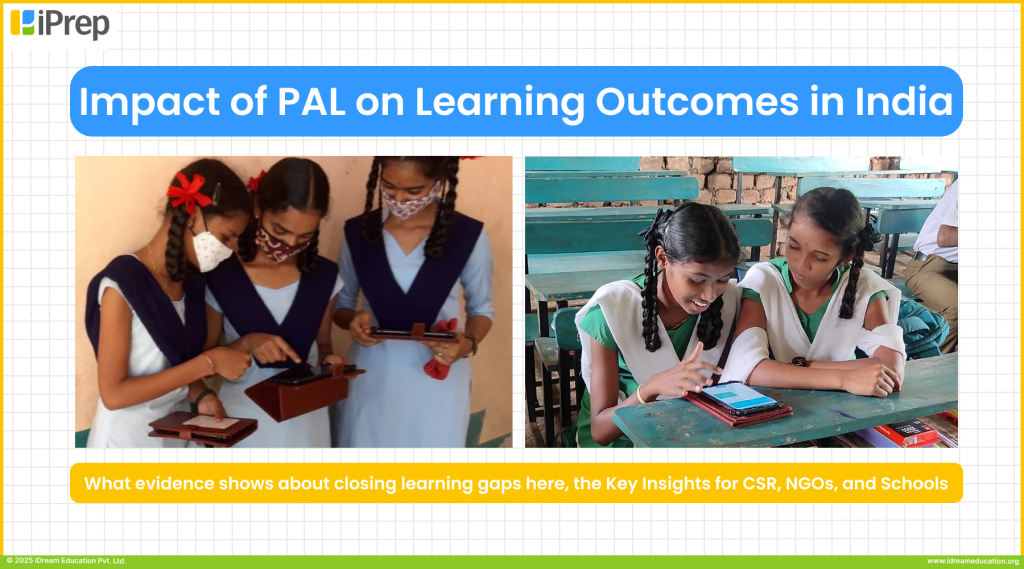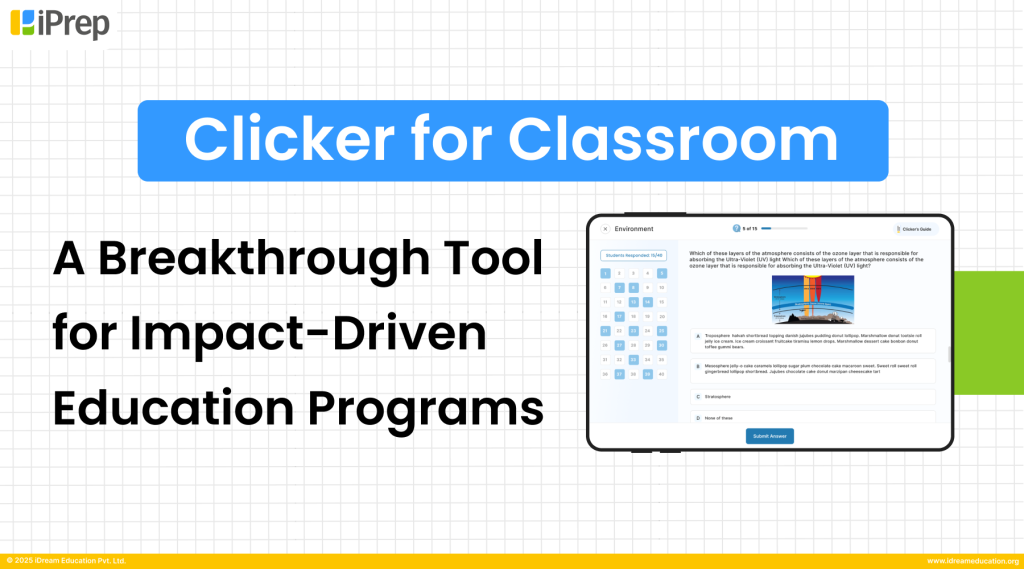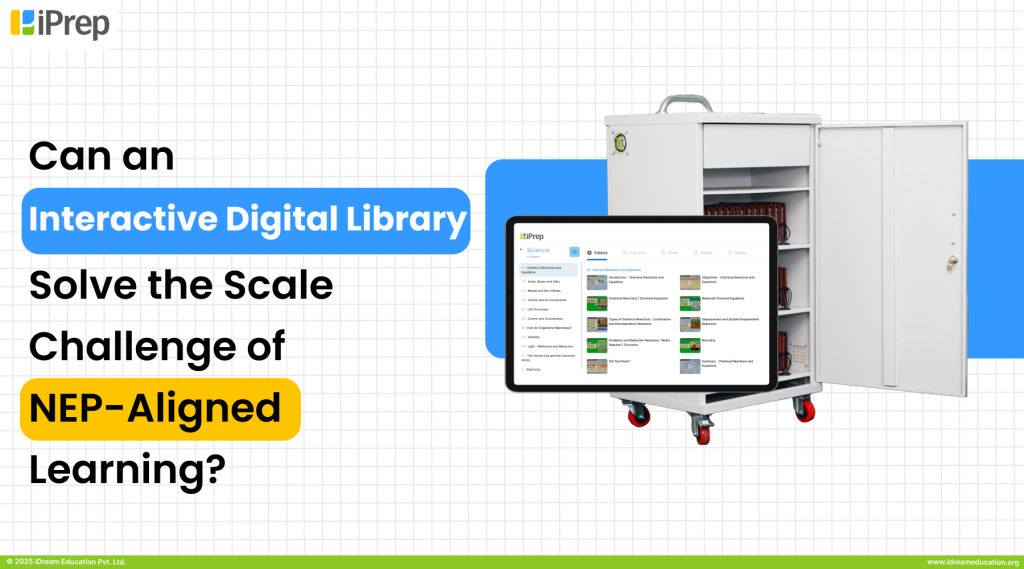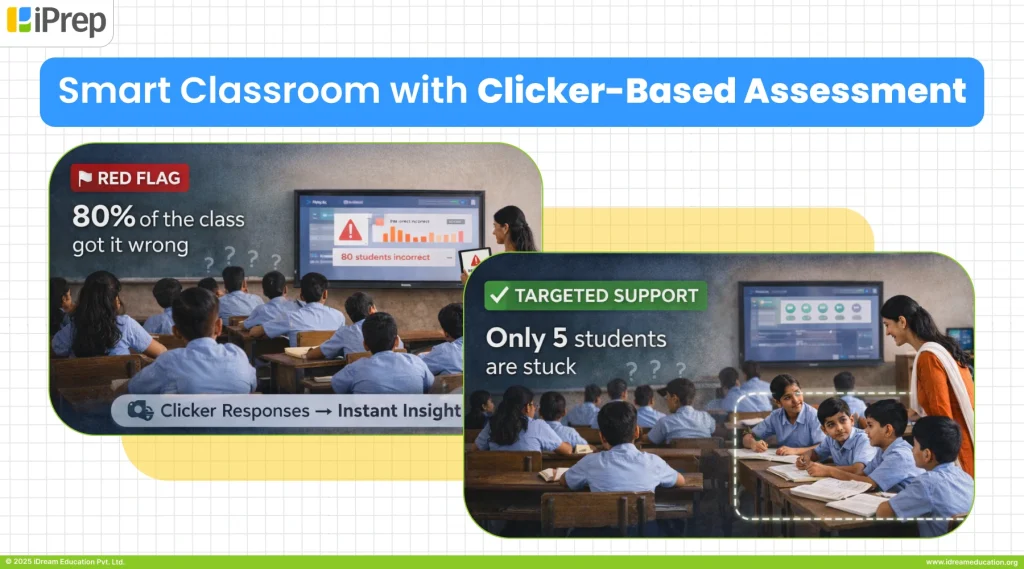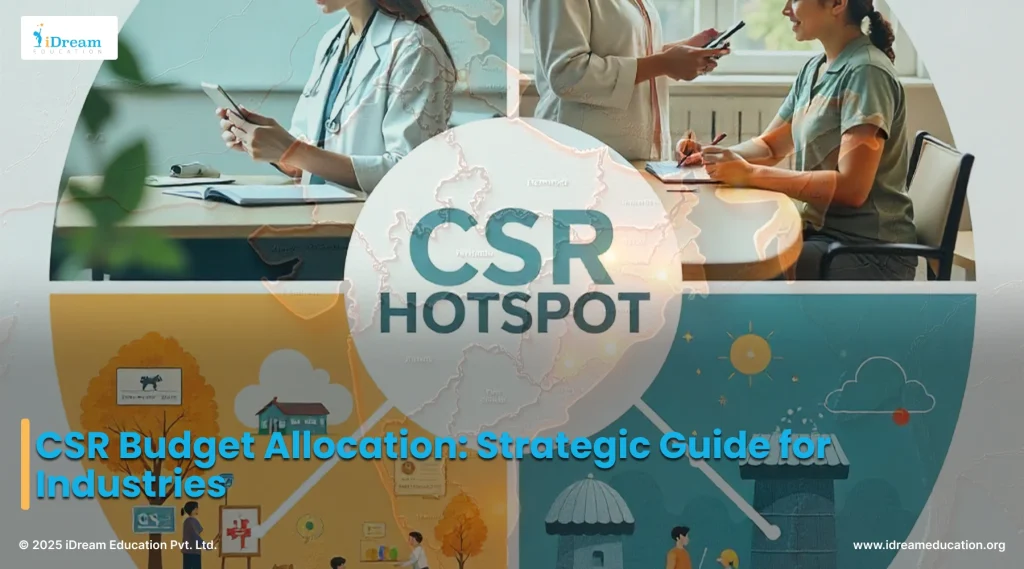
Introduction
The question “Where should we spend our CSR budget?” has moved far beyond checking a regulatory box. Today, it’s about creating impact that’s aligned with your business strengths and community needs. CSR is becoming both a legal obligation and a brand differentiator in India, especially under Section 135 of the Companies Act. This blog offers a strategic guide for businesses to make smarter, more impactful investments. From education and healthcare to sustainability and rural development, we’ll explore proven sectors and best practices so your CSR investment becomes a driver of meaningful social change and long-term value.
In this blog, we will consider several themes for CSR, covering examples, best practices, and examining CSR Programme ideas in India.
Education and Digital Equity, The Most Scalable CSR Investment
Education is the primary focus of CSR spending in India, taking up over 44% of all CSR funds in the financial year 2022–23. This is due to education laying the groundwork for individual growth and long-term community progress, making it a natural priority in any CSR budget allocation.
One of the biggest hurdles today is the digital divide. Many rural and government schools don’t have access to digital tools or internet connectivity. This creates a gap between students in cities who have advanced learning resources and those who are at a disadvantage. Directing a portion of your CSR budget toward bridging this gap can make a huge difference by supporting digital infrastructure, content, and teacher training in underserved areas.
- Smart classrooms and digital libraries: Setting up classrooms with interactive boards, digital content, and online learning resources supports teachers and makes learning more interesting.
- Tablet-based learning labs: Providing students with tablets loaded with curriculum-based materials enables learning even without internet access.
- STEM and robotics kits: Hands-on kits encourage interest in science, technology, engineering, and math, preparing students for future careers.
- Multilingual educational content: Offering learning materials in local languages helps children learn better and supports community literacy.
The impact of such CSR projects can be substantial. For example, in states like Maharashtra and Karnataka, digital education programs have provided over 30,000 extra learning hours for students and assisted in increasing pass rates for Class 10 exams by almost 35%.
Tracking CSR Trends Across India: Why It Matters for Education
India’s corporate social responsibility (CSR) landscape has evolved significantly in the past decade, with education consistently ranking as the most funded sector. In FY2023–24 alone, education attracted over ₹16,000 crore, roughly one-third of all CSR spending across the country. This sustained attention reflects a growing awareness among companies that long-term national development begins with learning.
However, this funding is not distributed evenly. According to data from the National CSR Exchange portal, states like Maharashtra (₹2,500+ crore) and Gujarat (₹1,424.47 crore) receive the lion’s share of education-linked CSR investments. In contrast, rural regions, aspirational districts, and parts of the North-East receive only 2–4% of the total allocation. This gap highlights the urgent need for targeted digital learning interventions in underfunded regions.
Projected trends suggest that CSR spending in India could grow to ₹1.2 lakh crore by FY2035, offering an unprecedented opportunity to close the equity gap. If even a modest share of this is directed toward digital education infrastructure especially offline and bilingual solutions millions of learners in remote or underserved areas could benefit.
For organizations and schools building digital libraries, understanding these patterns is vital. It helps them engage the right CSR partners, align proposals with corporate priorities, and build sustainable models of learning impact.
Education may get the largest CSR share, but it doesn’t always reach the learners who need it most. This makes equitable, inclusive digital learning platforms not just a solution, but a responsibility.
Healthcare and Sanitation, A Critical Post-Pandemic Priority
Healthcare has become a main focus for CSR spending, increasing to almost 29% of total allocations in the years after the COVID-19 pandemic. Investments in health are not just about building clinics or holding health camps, they’re about building healthy communities that are resilient, productive, and better equipped for the future.
For many companies, supporting healthcare means improving access where resources are limited. Programs often center on rural communities, factory towns, and urban slums, addressing gaps that government health services can’t always fill.
Some high-impact uses of CSR in healthcare and sanitation include:
- Community health centers and mobile medical vans: These bring essential medical services to remote areas. Data from several projects shows a measurable increase in immunization rates and a reduction in preventable diseases where mobile health units operate regularly.
- School-based hygiene and sanitation programs: Simple interventions like installing clean toilets, handwashing stations, and running hygiene workshops can significantly reduce absenteeism due to illness. For example, a World Bank study showed that schools with improved sanitation recorded a 12% rise in attendance, especially among girls.
- Access to menstrual hygiene and clean drinking water: Supporting the distribution of sanitary products and safe water solutions improves girls’ school participation and community health. According to UNICEF, these interventions can reduce school dropout rates by up to 10%.
Healthcare initiatives driven by CSR not only benefit beneficiaries directly but also strengthen employee morale and community trust in the sponsoring company. By focusing on preventive health, sanitation, and wellness, businesses help lay the groundwork for sustained local development.
If you want detailed examples and case studies, refer to organizations that have successfully run health and sanitation CSR campaigns. This insight can inspire more targeted, measurable impact in your programs.
Environment and Sustainability, Building a Long-Term Social License
In recent years, environmental responsibility has evolved from a voluntary gesture to a strategic necessity for industries across sectors. Whether in manufacturing, automotive, consumer goods, or energy, investing a portion of the CSR budget in sustainable practices is no longer optional. It’s now a critical part of long-term business strategy.
Using your CSR budget for environmental initiatives reduces ecological risks. It also builds consumer trust, especially in a time when climate change awareness is rapidly increasing.
Sustainability-focused CSR projects, such as renewable energy, afforestation, or waste management help protect natural ecosystems. They also boost a company’s reputation and reinforce its social license to operate in local communities.
Companies that invest their CSR budgets in such efforts often see better stakeholder relationships. They also report steady progress on their environmental, social, and governance (ESG) goals.
Key Areas for Investment Include:

Renewable Energy Access in Rural Areas:
By supporting solar or wind power initiatives in villages without reliable electricity, companies drive economic and educational development. Studies show that rural electrification leads to improved school attendance and new income-generating opportunities.
Afforestation and Watershed Management Programs:
Planting trees and managing water resources help combat soil erosion, improve agricultural productivity, and maintain biodiversity. These initiatives also act as carbon sinks, lessening environmental pollution in line with global climate objectives.
Plastic Reduction and Waste Management Projects:
Programs that encourage plastic reuse, recycling, and waste segregation reduce pollution and health hazards. These efforts have seen success with communities adopting zero-waste practices, leading to cleaner surroundings and improved public health..
For example, in states with active CSR-driven afforestation projects, over one million trees have been planted, contributing to improved air quality and community livelihoods through fruit farming and sustainable forestry.
Investing your CSR budget in environment and sustainability projects supports not only the future of our planet but also the long-term viability of your business. These initiatives help fulfill stakeholder expectations and comply with regulatory standards while creating positive ecological outcomes. Moreover, environmental CSR efforts often work best when combined with broader social programs, such as educational partnerships with technology companies, which can amplify impact and foster community development in innovative ways.
Rural Development, Empowering Underserved Communities
Rural communities in India often face challenges that urban areas overcome more easily. These include limited access to schools, healthcare, jobs, and digital technology.
Despite growing urbanization, a large part of India’s population still lives in rural regions. Many of these areas remain disconnected from national development and infrastructure.
That’s why industries with rural operations such as agriculture, FMCG, logistics, and mining have a unique opportunity. By strategically using their CSR budgets, they can drive real, lasting impact in these underserved communities.
By making rural development a priority, companies can improve entire communities through sustainable and scalable projects. These initiatives assist not only individuals, but also lay the groundwork for healthier, more prosperous markets over time.
Effective Initiatives for Rural Impact
Skill Training Centers for Youth:
Facilities that provide youth with hands-on training in trades, IT, or entrepreneurship can open doors to employment and self-sufficiency. Data shows that such programs increase employability and help keep young people in their villages, reducing the need for migration.
Financial Literacy and Credit Access:
Many rural families lack basic financial knowledge and access to formal credit systems. CSR programs that focus on workshops, awareness campaigns, and partnerships with microfinance organizations empower people to save, invest, and build small businesses.
Agricultural Support and Innovation:
Projects that provide modern farming equipment, seeds, or training on sustainable agricultural practices help raise productivity and incomes. Some programs introduce drip irrigation, organic fertilizer, or market linkage initiatives, fueling both food security and environmental sustainability.
Rural Infrastructure Development:
Roads, health centers, and digital connectivity bring lasting benefits to isolated villages, enabling smoother transport, communication, and access to essential services.
Real-World Results
Studies show that rural development projects backed by CSR investments can increase local employment by up to 20%. They also improve school attendance and boost key health indicators.
For example, targeted skill-building programs in some districts have helped hundreds of young adults get jobs in local industries. Many have even launched their own micro-enterprises.
By focusing on basic needs and economic growth, companies go beyond fulfilling CSR obligations. They build trust and long-term relationships with the communities they serve.
This trust helps create resilient markets and stronger brand loyalty.
If you’d like more practical examples or detailed strategies, explore our extended content on community-based CSR projects and rural innovation.
Women Empowerment and Inclusion, Closing the Opportunity Gap
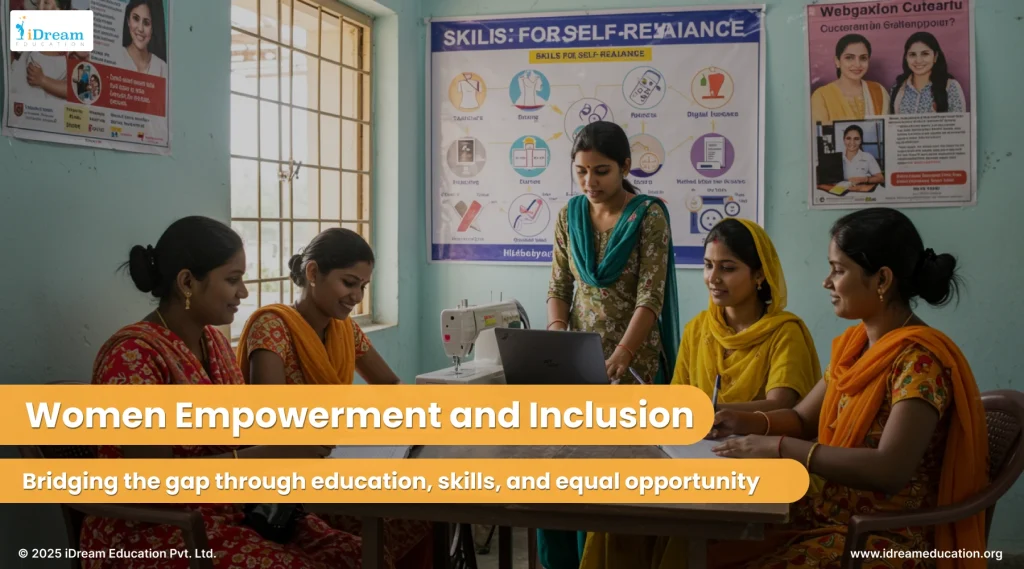
Advancing women and marginalized communities is crucial for sustainable societal progress. Even though there has been improvement, many women and disadvantaged groups still face barriers to education, economic opportunity, and leadership roles. Companies using their CSR budgets to address these gaps contribute not only to social justice but also to broader economic growth and community stability.
Inclusive CSR programs can have transformative effects. When women have access to education, skills, and resources, families are healthier, children stay in school longer, and communities prosper. Research shows that raising women’s participation in the workforce can significantly increase household incomes and local economic resilience.
High-Impact Focus Areas
Skill and Entrepreneurship Hubs for Women:
These centers provide vocational training, digital literacy, and small business mentoring. Participants often go on to launch businesses or find employment, multiplying the effects of each training cycle.
Access to Digital Tools for Girls:
Providing tablets, laptops, or smartphones loaded with educational content helps bridge the gender digital divide and ensures girls can learn and compete equally.
Leadership and Mentorship Programs:
Initiatives that connect girls and young women in rural and tribal areas with role models and training help foster confidence, ambition, and leadership capabilities. These can be vital for breaking cycles of poverty and marginalization.
Measurable Impact
Several CSR initiatives in India have increased female workforce participation by as much as 15% in project areas, while school drop-out rates among girls in supported regions have dropped by up to 10%. These results demonstrate that targeted support, with a focus on inclusion, doesn’t just help a few individuals, it raises entire communities.
Championing women and inclusion through CSR is about building a future workforce and leadership pipeline, as well as strengthening the social fabric. When industry leaders invest in these areas, they plant seeds for generations of positive change.
How to Choose the Right CSR Partner
Selecting the right partners for your CSR initiatives can make the difference between a program that simply spends money and one that delivers true, lasting impact. NGOs and implementing agencies help turn your vision into reality, manage project execution, and ensure outcomes are measurable and sustainable.
What to Look for in a CSR Partner
1. Experience and Track Record:
Choose partners with a proven history of implementing similar projects, particularly in the regions and sectors you want to impact. Past success stories and testimonials are strong indicators of reliability, especially when managing CSR budget allocations efficiently and effectively.
2. Transparency and Accountability:
Effective partners provide detailed reporting, real-time dashboards, and data tracking so you can measure outcomes and return on investment. Look for organizations that openly share monitoring data and project milestones with you, helping you justify how your CSR budget is being used.
3. Alignment with Company Values:
When your partner’s mission and expertise align with your company’s strengths and goals, projects are more relevant and impactful. For example, a tech company might partner with NGOs skilled in digital education, while a healthcare company may focus on medical outreach ensuring your CSR budget supports initiatives that align with core business values.
4. Capacity for End-to-End Implementation:
Ideal partners manage all phases of the project, from needs analysis to delivery, monitoring, and evaluation. This reduces your administrative burden and ensures consistent quality, allowing your CSR budget to be fully optimized for maximum impact.
5. Ability to scale and create a measurable impact:
An ideal CSR partner should have the ability in their programme to scale, experience to bring impact, so that whether your CSR investment whether small or huge, it leads to measurable impact in CSR initiatives
Questions to Consider
- Does the partner have the infrastructure and team to execute your project at scale?
- Can they customize solutions to local needs and cultural contexts?
- How do they measure impact and report progress?
- What support do they offer for community engagement?
Real-Life Example
Many CSR projects have flourished where businesses teamed with specialized NGOs familiar with the challenges of local communities. For example, digital education rollouts with some of the best NGOs in Education are most effective when led by partners with curriculum development and edtech experience, resulting in higher student engagement and smoother adaptation by teachers.
Practical Tips by Industry
- Technology firms: Focus CSR on bridging the digital divide by providing infrastructure, devices, and teacher training to underserved schools.
- Healthcare companies: Channel funds towards medical camps, health awareness, and telemedicine in remote regions, leveraging expertise to improve access.
- Manufacturers: Invest in skilling local youth for technical jobs, creating career pathways while supporting environmental cleanup or energy-saving community projects.
- Banks & Financial Services: Promote financial education for youth and women through workshops and digital tools, enabling economic inclusion.
- Energy companies: Advance projects that bring renewable energy to rural homes and schools, and sponsor safety or disaster preparedness training.
For more examples and guidance, review the successful projects detailed in Successful Education CSR Projects.
Education cuts across various CSR implementation themes, here’s why:
Education is a cross-cutting initiative. It is essential to every CSR budget allocation, whether the focus is healthcare, skilling, livelihood, or technology. From sustainability to health, every CSR theme draws strength from the foundational role that education plays.
There are two key layers to this. The first is basic education, which helps uplift learning levels in schools and equips children and youth with essential skills. This educational base enables long-term impact. It prepares young people to join India’s skilled workforce, directly supporting the goals of any CSR-funded initiative.
Take the example of a CSR project focused on skilling. Can community members truly grow if they lack financial literacy, digital know-how, or the ability to communicate in English? Can they thrive without understanding core subjects like math and science? Discipline, critical thinking, and gender sensitivity are all outcomes of sustained education. Without these, skill-building efforts may not bring lasting change.
Spending a CSR budget only on short-term skilling may offer short-term results. But without a foundation in education, such efforts may not break cycles of poverty, poor health, and poor hygiene. This is why education must be seen not just as a sector, but as the backbone of all impact areas.
Education NGOs and edtech partners like iDream Education help CSR programs deliver quality learning. They also create focused modules on digital literacy, health, hygiene, nutrition, and life skills for both students and communities.
An excellent example of integration of Education in a development programme:
iDream Education partnered with Milaan Foundation on a project funded by the British Asian Trust. They launched a mobile learning program for 7,000 girls in rural Uttar Pradesh and Madhya Pradesh. These were areas where girl child education and women’s empowerment faced serious challenges.
In many of these communities, girls dropped out early and were often married before turning 18. The program brought them back to school. They made real progress in English and Math. Dropout rates declined. Cases of early marriage were prevented.
The impact went beyond academics. Education gave these girls confidence, skills, and a future. It also lifted the community around them. This is the power of education in a well-planned CSR budget.
Final Tips to Maximize CSR Initiative ROI
Maximizing the return on your CSR investment means going beyond simply allocating funds. It requires strategic focus, continuous monitoring, and flexibility in approach. Here are some essential tips that have helped companies sharpen their impact while aligning with their business goals:
Prioritize Underserved Regions:
Targeting geographically underserved areas such as Jharkhand, Odisha, and the northeastern states can amplify your CSR impact. These regions typically have higher needs and lower baseline services, so even modest investments can spark significant improvements in education, health, and livelihood.
Adopt Flexible, Inclusive Technology:
Tools and platforms that support offline modes and multiple Indian languages increase reach and adoption. This flexibility ensures that CSR initiatives overcome common barriers like poor internet connectivity or language gaps.
Implement Real-Time Monitoring and Transparent Reporting:
Work with NGO partners or tech platforms that provide live dashboards and detailed usage analytics. Track metrics like learning hours, attendance, health screenings, or waste reductions. This helps you measure real outcomes, not just outputs.
Engage Stakeholders Frequently and Learn Continuously:
Collect regular feedback from beneficiaries, teachers, health workers, and local leaders. This keeps your CSR programs relevant and responsive to changing needs.
Align CSR with Business Goals and Brand Personality:
When CSR initiatives mirror your company’s core competencies, they generate shared value. For example, tech firms focusing on digital education or pharmaceutical companies supporting health interventions amplify authentic brand engagement.
By cultivating these habits, your CSR budget becomes an investment in sustainable social progress and a catalyst for stronger stakeholder relationships.
Conclusion
The question of where to allocate your CSR budget is no longer just about meeting legal requirements. Today, it is about identifying sectors where your resources can create the most meaningful, scalable, and lasting impact. Education, healthcare, environment, rural development, and women’s empowerment offer proven opportunities for transformative change when approached strategically.
Successful CSR is not about spreading resources thinly but focusing on areas where your company’s strengths meet urgent social needs. Backed by data, built on collaboration, and guided by transparency, your CSR programs can drive social good and enhance your brand. They also strengthen employee engagement and community trust.
Imagine decades from now your CSR-supported communities thriving in education, health, and sustainable livelihoods. Your company will be seen as a true catalyst for long-term change. That’s the power of purposeful CSR investment.
Ready to start or improve your CSR journey? Let’s explore how to build measurable, high-impact programs tailored to your industry.
For more information, you may contact us at +917678265039. You can also write to us at share@idreameducation.org or share your details here.


